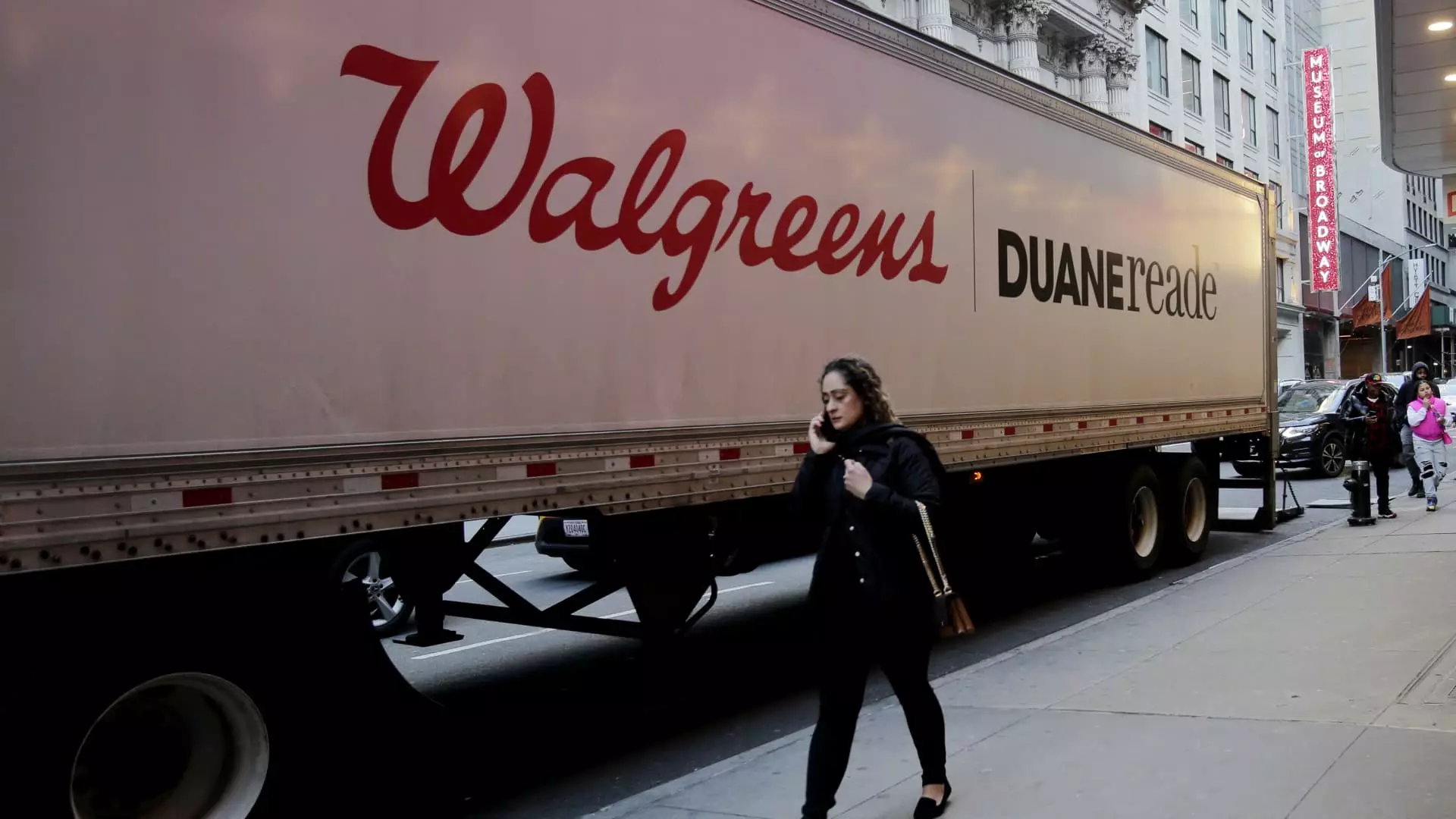On Friday, Walgreens Boots Alliance, Inc. reported their fiscal first-quarter results, which significantly surpassed analysts’ expectations. The company recorded an earnings per share (EPS) of 51 cents, adjustable for certain factors, exceeding the anticipated 37 cents. Revenue reached $39.46 billion, an impressive figure above the expected $37.36 billion. These results indicate a robust response to previous hardships that have troubled the company over the past year. Nevertheless, Walgreens reiterated its guidance for adjusted earnings per share in fiscal 2025, estimating a range between $1.40 and $1.80, cautioning investors while holding back on an annual sales forecast.
In reaction to this financial revelation, Walgreens shares surged approximately 10% in premarket trading, highlighting a renewed optimism among investors. The stock price surge underscores the extent to which stakeholders are eyeing the company’s turnaround efforts with cautious hope. This optimism comes amidst a backdrop of challenges, including shrinking pharmacy reimbursements, reduced consumer spending, and setbacks associated with the company’s venture into primary healthcare services. Notably, these earnings results surfaced simultaneously with reports suggesting that Walgreens is engaged in discussions regarding a potential acquisition by Sycamore Partners, a private equity firm. Such moves reflect the urgency of navigating through a turbulent financial landscape.
Performance Breakdown by Business Segment
Walgreens’ financial resurgence was buoyed by the growth across its three core segments. The U.S. retail pharmacy segment generated sales of $30.87 billion, representing a 6.6% increase year-over-year, defying expectations which had set sales at merely $29.21 billion. The uptick in pharmacy-focused sales, which grew by 10.4%, stems from several factors, including significant inflation in branded medications. During this quarter, Walgreens filled 316.3 million prescriptions, a slight uptick of 1.5%. However, the retail sales segment reflected a decline of 6.2%, prompting management to highlight the impact of an uncharacteristically mild cough, cold, and flu season on sales, alongside softer performances in discretionary product categories.
Walgreens’ performance in the healthcare segment also showcased substantial growth, with revenues soaring to $2.17 billion, eclipsing expectations of $2.09 billion. This growth was fueled by advancements in their primary-care provider partnerships, specifically with VillageMD and Shields Health Solutions, which cater to a clientele with intricate healthcare needs. The international unit also contributed positively, generating $6.43 billion, an increase of 10.2%, surpassing anticipated revenue figures and bolstered by the performance of the U.K. chain Boots.
Challenges Ahead and Strategic Initiatives
Despite these promising figures, Walgreens continues to confront significant challenges. The company recorded a net loss of $265 million—or 31 cents per share—in the first quarter, contrasting sharply with the net loss of $67 million or 8 cents per share from the previous year. This loss is primarily attributed to ongoing operational setbacks tied to its extensive strategy to consolidate its retail footprint, involving the closure of 1,200 underperforming locations in a bid to streamline operations. Notably, 500 of these closures are planned for fiscal 2025 alone. This rationalization reflects a broader restructuring strategy aimed at stabilizing the core pharmacy business and enhancing financial performance.
In discussing the current state of affairs, Walgreens’ CEO Tim Wentworth emphasized the disciplined execution of their “2025 priorities.” He pointed to efforts directed towards optimizing operational efficiencies, establishing a more strategic retail footprint, managing costs, and improving cash flow as integral components of their strategy. Additionally, the adaptation of reimbursement models remains a focal point of their tactical approach.
Walgreens has undeniably demonstrated resilience amid adversity and is actively navigating a transformative phase. While recent financial results suggest an upward trajectory, the company’s ongoing losses, store closures, and evolving market landscape necessitate astute management and a clear vision moving forward. Their commitment towards rebuilding and stabilizing a sustainable pharmacy-led operating model can be viewed as a long-term solution, albeit one that will take time to materialize fully. With continued innovation and a strategic focus on their core competencies, Walgreens aims to regain its foothold in the competitive landscape of healthcare and retail pharmacy, translating current victories into sustained future growth.


Leave a Reply